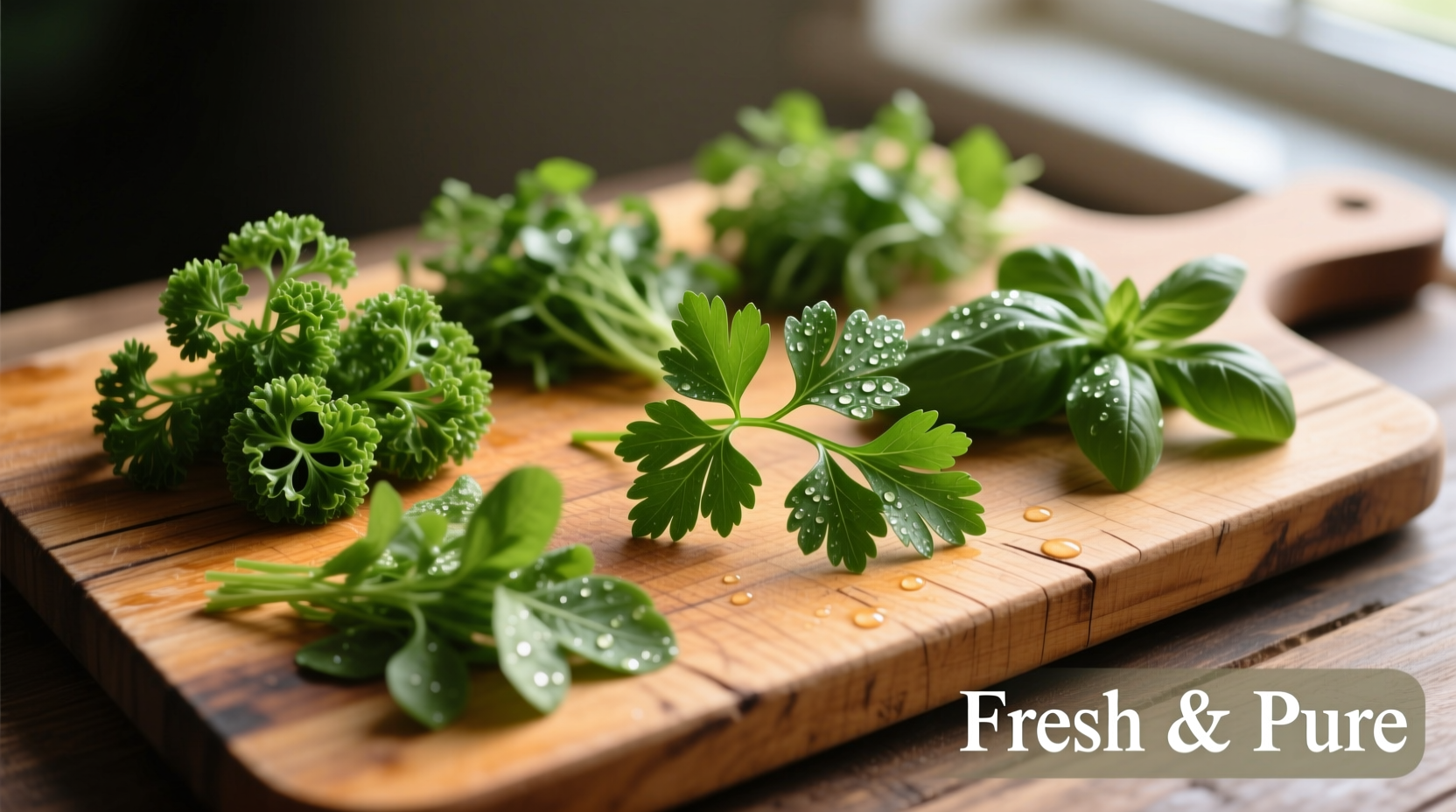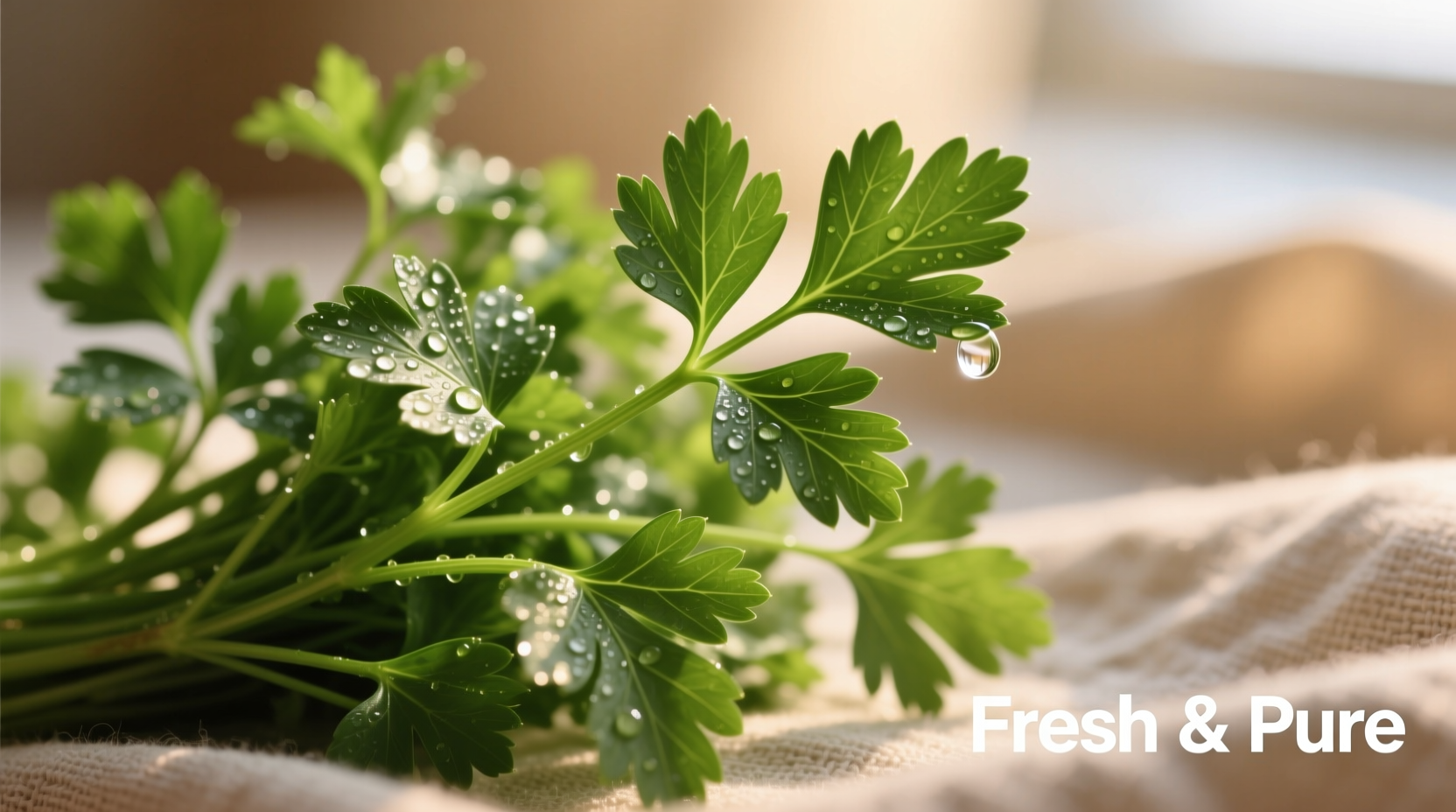Parsley (not "parsleys") is a biennial herb in the Apiaceae family with two primary varieties: flat-leaf (Italian) and curly-leaf. This nutrient-dense herb contains 506% of your daily vitamin K, 108% of vitamin C, and significant antioxidants per 100g serving according to USDA data. Both varieties offer identical nutritional profiles but differ in flavor intensity and culinary applications.
Demystifying the Term: Why It's Parsley, Not Parsleys
Many searchers use "parsleys" when referring to the popular culinary herb. This common linguistic variation stems from how we pluralize many food items (like "berries" or "peas"). However, botanical naming conventions treat herbs as uncountable nouns. Just as we say "basil" rather than "basils," the correct term is simply "parsley" regardless of quantity. Understanding this distinction helps you find accurate information about this versatile herb.
Two Main Varieties: Choosing the Right Type for Your Needs
When selecting parsley for your kitchen, you'll encounter two primary varieties with distinct characteristics. The difference isn't merely aesthetic—each type serves specific culinary purposes based on flavor profile and texture.
| Characteristic | Flat-Leaf (Italian) Parsley | Curly-Leaf Parsley |
|---|---|---|
| Flavor Intensity | Bolder, more robust herbal flavor | Milder, slightly grassier taste |
| Texture | Softer, more delicate leaves | Firmer, crinkled texture |
| Culinary Best Uses | Sauces, pesto, Mediterranean dishes | Garnishes, soups, stews |
| Storage Life | 5-7 days refrigerated | 7-10 days refrigerated |
| Historical Origin | Mediterranean region | Developed in European gardens |
From Ancient Remedy to Kitchen Staple: The Evolution of Parsley
Parsley's journey through culinary history reveals why it remains indispensable today. Unlike many herbs that fell in and out of favor, parsley maintained consistent importance across civilizations:
- Ancient Greece (500 BCE): Initially used for medicinal purposes and as victory crowns at athletic competitions, not for cooking
- Roman Era (100 CE): Began appearing in recipes like Apicius' "De Re Coquinaria," often combined with other herbs in "silphium" substitutes
- Middle Ages (1000-1500 CE): Monasteries cultivated parsley for both medicinal gardens and kitchen use, though some cultures considered it unlucky
- Renaissance (1500-1700 CE): Flat-leaf variety became standard in Mediterranean cooking while curly-leaf gained popularity in Northern Europe
- Modern Era (1800s-present): Scientific analysis confirmed parsley's exceptional nutritional profile, validating traditional uses
According to research published in the Journal of Ethnopharmacology, parsley's transition from medicinal herb to culinary essential was largely complete by the 16th century, coinciding with the publication of early European cookbooks that featured it prominently.
Nutritional Powerhouse Backed by Science
While many herbs offer flavor with minimal calories, parsley stands out for its exceptional nutrient density. A 30g serving (about 1 cup chopped) provides:
- Vitamin K: 1,230% of Daily Value (crucial for blood clotting and bone health)
- Vitamin C: 38% of Daily Value (powerful antioxidant)
- Vitamin A: 17% of Daily Value (supports vision and immune function)
- Folate: 9% of Daily Value (essential for cell division)
- Iron: 4% of Daily Value (important for oxygen transport)
The USDA's National Nutrient Database confirms these values remain consistent across both main varieties. What makes parsley particularly valuable is its combination of these nutrients with flavonoids like apigenin and luteolin, which have demonstrated anti-inflammatory properties in studies conducted by the National Institutes of Health.

Culinary Applications: Beyond the Garnish Plate
Professional chefs consistently underutilize parsley's potential, often relegating it to mere decoration. To maximize flavor impact:
When to Choose Each Variety
Understanding context boundaries prevents culinary disappointment. Flat-leaf parsley's more robust flavor makes it ideal for dishes where parsley plays a starring role:
- Use flat-leaf when: Making chimichurri, tabbouleh, or pesto where parsley flavor should dominate
- Use curly-leaf when: Adding to soups or stews where you want visual texture without overwhelming herbal notes
- Never substitute when: Following traditional recipes like Lebanese tabbouleh (requires flat-leaf) or classic French fines herbes (traditionally uses flat-leaf)
Pro Techniques for Maximum Flavor
Most home cooks waste half the parsley plant. To extract full value:
- Stem utilization: Finely chop tender stems and add to stocks or sauces—they contain concentrated flavor compounds
- Timing matters: Add flat-leaf parsley in the last 2 minutes of cooking; curly-leaf can withstand slightly longer exposure to heat
- Preservation method: Freeze chopped parsley in olive oil cubes rather than drying, which destroys delicate volatile compounds
Growing Your Own: Simple Success for Every Gardener
Parsley's reputation for slow germination (up to 4 weeks) discourages many gardeners, but proper technique yields reliable results:
- Soil requirements: Well-draining soil with pH 6.0-7.0; amend heavy clay with compost
- Germination hack: Soak seeds for 24 hours before planting to reduce sprouting time by 50%
- Harvesting schedule: Begin harvesting outer leaves when plant reaches 15cm height, never taking more than 1/3 of the plant at once
- Winter survival: In zones 6+, mulch heavily to overwinter plants for earlier spring harvest
According to Cornell University's Gardening Resources, parsley grown in partial shade (4-6 hours of sun) develops more tender leaves with less bitterness than full-sun specimens—a crucial detail often overlooked in gardening guides.
Avoiding Common Parsley Pitfalls
Even experienced cooks make these preventable mistakes:
- The storage mistake: Storing parsley like flowers in water without covering leaves causes rapid wilting. Instead, trim stems, place in water, and cover loosely with a plastic bag in the refrigerator
- The washing error: Rinsing parsley just before use bruises delicate leaves. Wash immediately after purchase, dry thoroughly, then store
- The heat misconception: Adding parsley to hot dishes too early destroys volatile flavor compounds. Stir in during the final minute for maximum impact
Conclusion: Making Parsley Work for You
Understanding that "parsleys" refers to the singular herb parsley unlocks its full potential in your kitchen and garden. By selecting the appropriate variety for your application, respecting its culinary boundaries, and using professional techniques for preparation and storage, you transform this often-overlooked herb from mere garnish to flavor cornerstone. Whether you're growing your first herb garden or refining professional cooking techniques, proper parsley utilization elevates every dish it touches.











 浙公网安备
33010002000092号
浙公网安备
33010002000092号 浙B2-20120091-4
浙B2-20120091-4